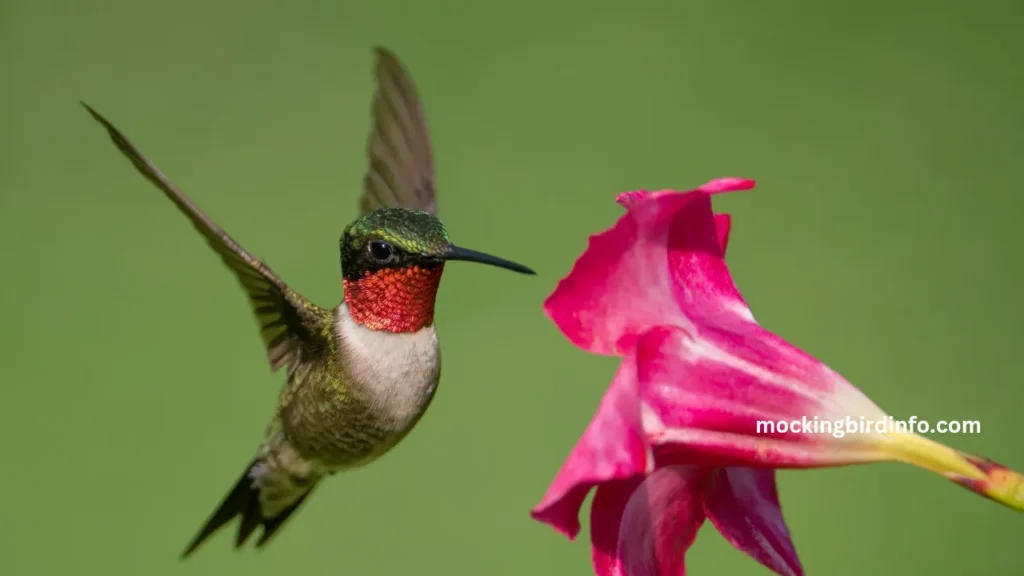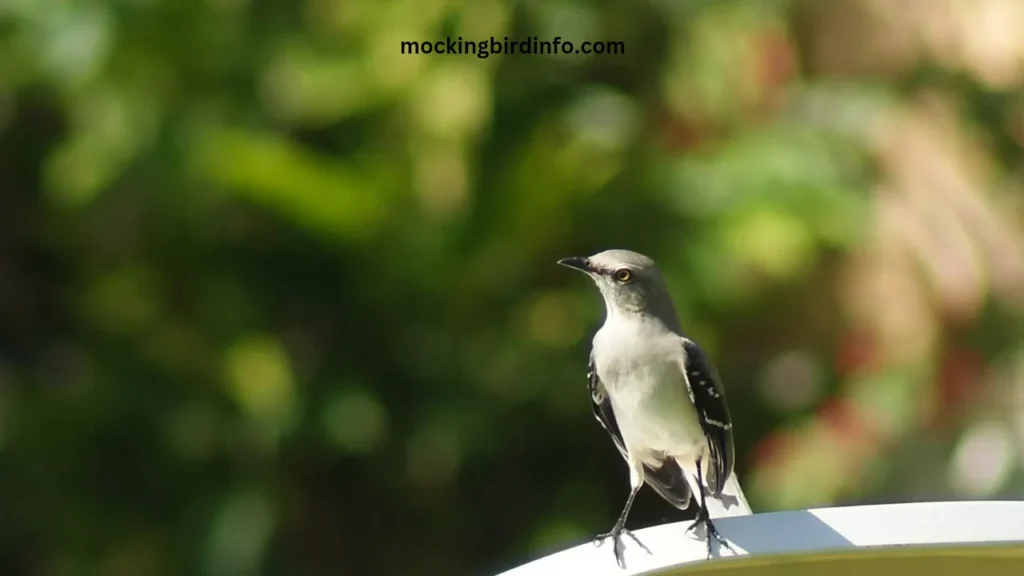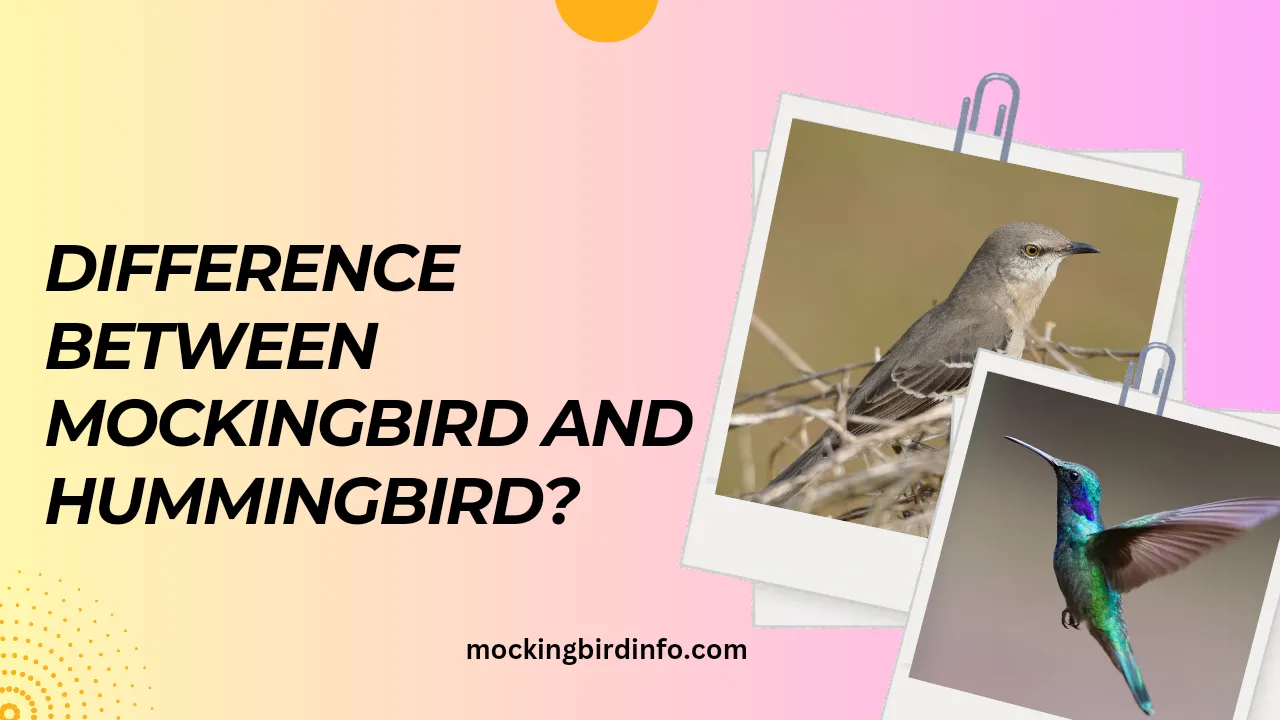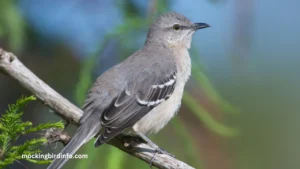When we think of birds that captivate our attention, hummingbirds and mockingbirds stand out for entirely different reasons. One mesmerizes with its ability to hover mid-air like a tiny jewel, while the other enchants us with its extraordinary ability to mimic countless sounds.
These two birds are among nature’s most fascinating creations, but they couldn’t be more different in their appearance, behavior, and ecological roles.
Understanding the distinctions between hummingbirds and mockingbirds is not just an exercise in ornithology; it’s a window into the incredible variety of life on Earth.
How do these birds, each so unique, adapt to their environments and contribute to their ecosystems? And why do they capture our imagination in such distinct ways?
In this article, we’ll explore the physical differences, dietary habits, vocal abilities, and behavioral traits that set these two species apart. Whether you’re a bird enthusiast or someone curious about nature’s wonders, this journey into the world of hummingbirds and mockingbirds will leave you with a newfound appreciation for their remarkable lives.

Contents
1. Physical Differences
Size and Shape:
Hummingbirds are among the smallest birds in the world, with some species measuring just 3 inches in length. In contrast, mockingbirds are larger and more robust, typically ranging from 9–11 inches, giving them a more noticeable presence in their habitats.
Plumage:
Hummingbirds are renowned for their vivid, iridescent feathers, which shimmer in the sunlight, creating a dazzling display. Mockingbirds, on the other hand, have subdued gray or brown plumage, with subtle white wing patches that are visible during flight.
Wing Structure:
The wing structure of hummingbirds is unique, allowing them to hover, fly backward, and even upside down, an ability unmatched by any other bird. Mockingbirds possess a more conventional wing structure, enabling swift, agile flight but not the acrobatics of hummingbirds.
2. Dietary Habits
Nectar Consumption:
Hummingbirds rely heavily on nectar from flowers, using their long, specialized beaks and tongues to extract it. This diet provides the high energy they need for their rapid wingbeats.
Insect Predation:
While nectar is their primary food source, hummingbirds also consume small insects such as gnats and mosquitoes, especially during breeding seasons. This helps them meet their protein requirements.
Mockingbird Diet:
Mockingbirds are omnivorous and have a more varied diet, including insects, fruits, and seeds. Their adaptable feeding habits allow them to thrive in a wide range of environments.

3. Vocalizations
Song Complexity:
Mockingbirds are famous for their complex songs and the ability to mimic over 200 different sounds, including other birds, animals, and even machinery. Their vocal repertoire is a testament to their adaptability and intelligence.
Mimicry:
While mockingbirds excel in mimicry, hummingbirds have a more limited vocal range, producing soft chirps and trills rather than elaborate songs. Their sounds are more functional, used primarily for communication and territory defense.
4. Habitat and Behavior
Habitat Preferences:
Hummingbirds prefer flower-rich environments, including gardens, forests, and meadows, where they can easily access nectar. Mockingbirds thrive in urban areas, open fields, and wooded regions, often nesting in shrubs or trees close to human settlements.
Migration Patterns:
Hummingbirds are known for their long-distance migrations, with some species traveling over 3,000 miles annually. Mockingbirds, by contrast, are more sedentary, though some populations may migrate short distances in response to seasonal changes.
Territorial Behavior:
Mockingbirds are highly territorial and aggressive, often chasing away intruders, including larger birds. Hummingbirds also defend their feeding territories, but their small size often limits their ability to confront larger animals.
5. Ecological Roles
Pollination:
Hummingbirds play a critical role in pollination, transferring pollen between flowers as they feed, thereby helping maintain biodiversity.
Seed Dispersal:
Mockingbirds contribute to their ecosystems by aiding in seed dispersal, particularly through their consumption of fruits. This helps plants spread and grow in new areas.
Pest Control:
Both birds help control insect populations, with hummingbirds targeting smaller insects and mockingbirds preying on larger ones like grasshoppers and beetles.
Conclusion
The hummingbird and the mockingbird are two birds that highlight nature’s diversity in stunning ways. The hummingbird, with its iridescent plumage and acrobatic flight, is a marvel of adaptation to high-energy nectar feeding. The mockingbird, with its mimicry and bold personality, showcases intelligence and resilience, thriving in various environments.
Both birds are vital to their ecosystems—hummingbirds as pollinators and mockingbirds as seed dispersers and insect controllers. They remind us of the intricate connections between species and the importance of protecting their habitats to preserve these natural wonders.
By understanding their differences, we can better appreciate their unique qualities and the roles they play in maintaining ecological balance. Let us celebrate the beauty of these birds and work toward conserving their habitats for generations to come.
FAQs
No, they belong to entirely different bird families. Hummingbirds are in the family Trochilidae, while mockingbirds belong to the family Mimidae.
2. What do hummingbirds eat?
Hummingbirds primarily consume nectar from flowers, supplemented by small insects for protein.
3. Can mockingbirds hover like hummingbirds?
No, mockingbirds cannot hover. Only hummingbirds possess the wing structure and energy efficiency required for hovering.
4. Why are mockingbirds known for mimicry?
Mockingbirds mimic sounds to defend their territory, attract mates, and adapt to their environment.
5. Do hummingbirds migrate?
Yes, many hummingbird species undertake long migrations, traveling thousands of miles between breeding and wintering grounds.
6. Are mockingbirds aggressive?
Yes, mockingbirds are highly territorial and will aggressively defend their nests and feeding areas.








